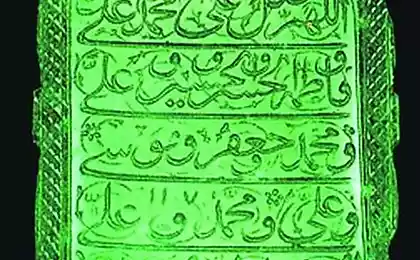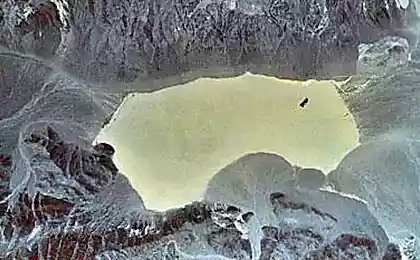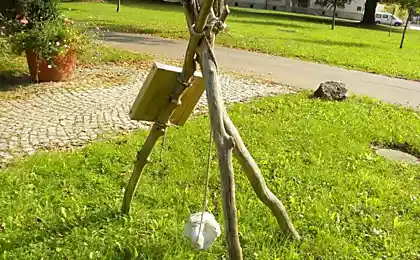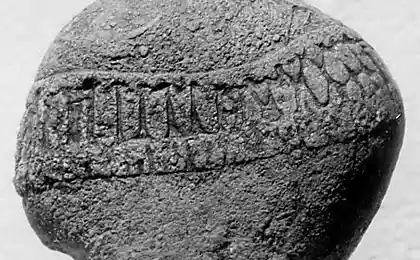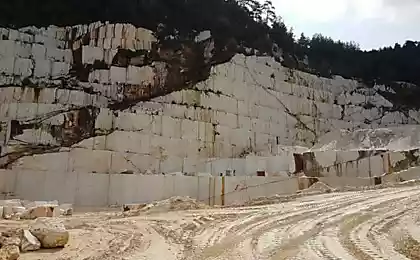529
Travanti amazing stones, which can grow
In the center and South of Romania, far from cities, meet amazing stones. The locals have even invented a special name — travanti. These stones can not only grow, but multiply.
In most cases these stones have a rounded or streamlined shape and devoid of sharp chips. In appearance they differ little from any other boulders, which in these places a lot. But after the rain with travanti begins to happen something incredible: they, like mushrooms, are taken to grow and increase in size.
Each trovant weighing only a few grams can eventually grow and put more than a ton. Young stones grow faster with age, growth slows trovata.
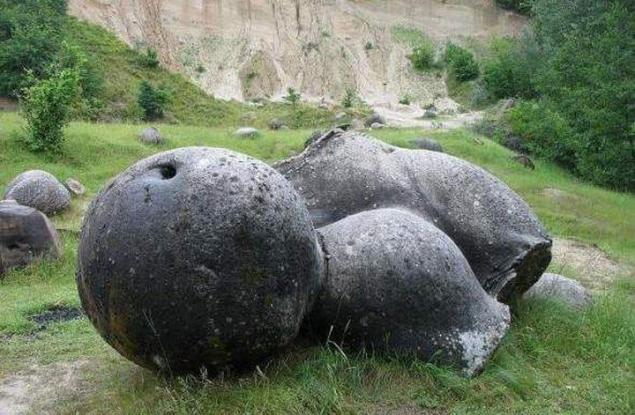
Growing rocks consist mostly of Sandstone. Their internal structure is also very unusual: if you sawed the stone in half, the slice, like cutting the tree, you can see a few age rings, centered around a small solid core.
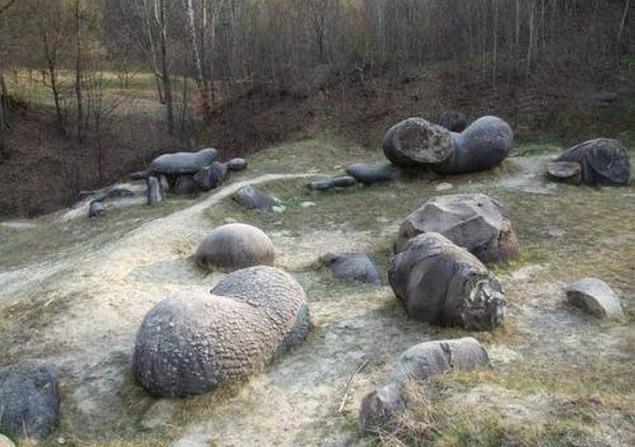
Despite the uniqueness of trovanto, geologists are in no hurry to take them into the category unexplained by science phenomena. According to the scientists, growing stones, though unusual, but their nature is hard to explain. Geologists claim that travanti — the result of a long process of cementation of the sand that took place millions of years in the bowels of the earth. On the surface of these stones have appeared during a strong seismic activity.
Scientists found the explanation for the growth trovanto: stones increase in size due to high content of various mineral salts, under their shell. When the surface becomes wet, these chemicals begin to expand and put pressure on the sand, making the stone "grow".
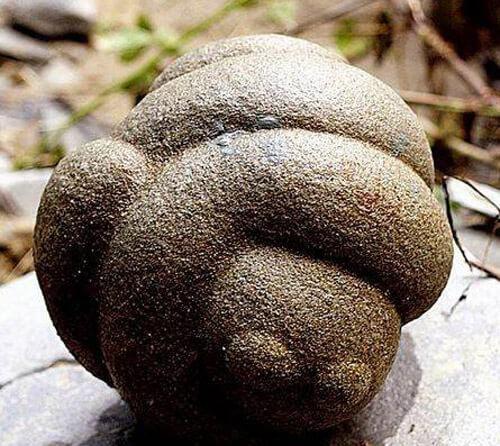
Reproduction by budding
Nevertheless, there are trovanto one feature that geologists can not explain. Live stones, in addition to grow, can still reproduce.
It happens this way: after the surface of the stone gets wet, it becomes a small bump. Over time it grows, and when the weight of the new stone becomes large enough it breaks off from the parent.
The structure of the new trovanto is the same as the other, older rocks. Inside is also present-what is the main mystery to scientists. If the growth of the stone somehow can be explained from a scientific point of view, the process of dividing the stone core defies any logic. In General, the process of reproduction trovanto reminiscent of budding, causing some experts to think seriously about whether they are hitherto unknown inorganic form of life.
The locals for hundreds of years know about the unusual properties trovanto, but they do not pay. Before growing the stones were used as building materials. Travanti often can be found in Romanian cemeteries — large stones set as tombstones because of their unusual appearance.
Noted for some travanti and another fantastic ability. Like the famous crawling the rocks of California's Death Valley nature reserve, they sometimes move from place to place.
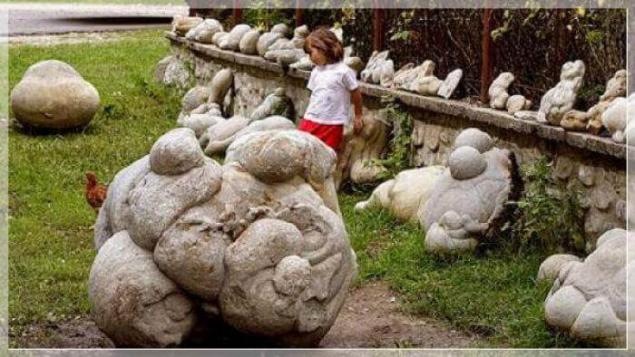
The Museum under the open sky
Today travanti is one of the attractions of Central Romania, to take a look at that attracts tourists from all over the world. In turn, the resourceful Romanians made from small trovanto Souvenirs and jewellery, and because each guest has the opportunity to bring from the trip a piece of stone wonder. Many owners of stone-Souvenirs argue that commemorative products trovanto, when wet, begins to grow, and they sometimes arbitrarily move around your home that makes quite a creepy impression.
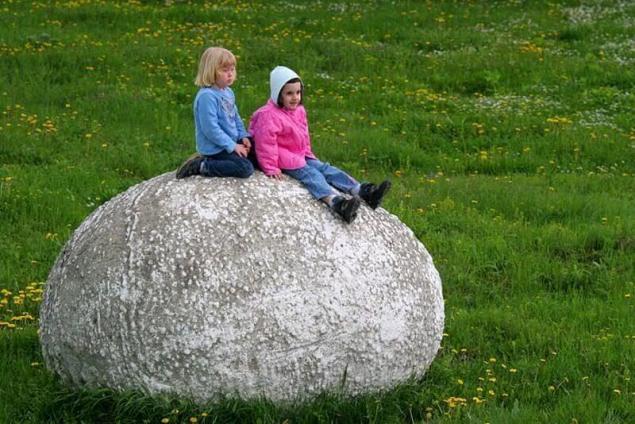
The largest concentration growing stones recorded in the Romanian County (region) in Valcea. In its territory there are travanti in all shapes, sizes and colors. In connection with great interest of tourists in 2006 vilchinskiy authorities in the village of Costesti, the only one in the entire country trovanto Museum under the open sky.published
Also interesting: Kaziyski column — a unique monastery on the rock
The secrets of petroglyphs of Galicia
P. S. And remember, only by changing their consumption — together we change the world! ©
Join us in Facebook , Vkontakte, Odnoklassniki
Source: www.orator.ru/int_31.html
In most cases these stones have a rounded or streamlined shape and devoid of sharp chips. In appearance they differ little from any other boulders, which in these places a lot. But after the rain with travanti begins to happen something incredible: they, like mushrooms, are taken to grow and increase in size.
Each trovant weighing only a few grams can eventually grow and put more than a ton. Young stones grow faster with age, growth slows trovata.

Growing rocks consist mostly of Sandstone. Their internal structure is also very unusual: if you sawed the stone in half, the slice, like cutting the tree, you can see a few age rings, centered around a small solid core.

Despite the uniqueness of trovanto, geologists are in no hurry to take them into the category unexplained by science phenomena. According to the scientists, growing stones, though unusual, but their nature is hard to explain. Geologists claim that travanti — the result of a long process of cementation of the sand that took place millions of years in the bowels of the earth. On the surface of these stones have appeared during a strong seismic activity.
Scientists found the explanation for the growth trovanto: stones increase in size due to high content of various mineral salts, under their shell. When the surface becomes wet, these chemicals begin to expand and put pressure on the sand, making the stone "grow".

Reproduction by budding
Nevertheless, there are trovanto one feature that geologists can not explain. Live stones, in addition to grow, can still reproduce.
It happens this way: after the surface of the stone gets wet, it becomes a small bump. Over time it grows, and when the weight of the new stone becomes large enough it breaks off from the parent.
The structure of the new trovanto is the same as the other, older rocks. Inside is also present-what is the main mystery to scientists. If the growth of the stone somehow can be explained from a scientific point of view, the process of dividing the stone core defies any logic. In General, the process of reproduction trovanto reminiscent of budding, causing some experts to think seriously about whether they are hitherto unknown inorganic form of life.
The locals for hundreds of years know about the unusual properties trovanto, but they do not pay. Before growing the stones were used as building materials. Travanti often can be found in Romanian cemeteries — large stones set as tombstones because of their unusual appearance.
Noted for some travanti and another fantastic ability. Like the famous crawling the rocks of California's Death Valley nature reserve, they sometimes move from place to place.

The Museum under the open sky
Today travanti is one of the attractions of Central Romania, to take a look at that attracts tourists from all over the world. In turn, the resourceful Romanians made from small trovanto Souvenirs and jewellery, and because each guest has the opportunity to bring from the trip a piece of stone wonder. Many owners of stone-Souvenirs argue that commemorative products trovanto, when wet, begins to grow, and they sometimes arbitrarily move around your home that makes quite a creepy impression.

The largest concentration growing stones recorded in the Romanian County (region) in Valcea. In its territory there are travanti in all shapes, sizes and colors. In connection with great interest of tourists in 2006 vilchinskiy authorities in the village of Costesti, the only one in the entire country trovanto Museum under the open sky.published
Also interesting: Kaziyski column — a unique monastery on the rock
The secrets of petroglyphs of Galicia
P. S. And remember, only by changing their consumption — together we change the world! ©
Join us in Facebook , Vkontakte, Odnoklassniki
Source: www.orator.ru/int_31.html


